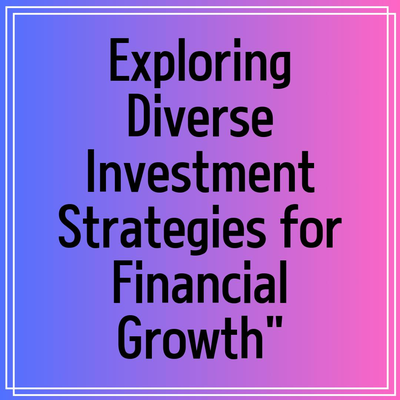Understanding Investment Strategies
The world of investments holds a myriad of opportunities for those willing to learn and explore. The right investment strategy can significantly enhance your financial portfolio and lead to greater wealth creation over time. Each investor will have their own unique goals, risk tolerance, and time horizon, making it imperative to select a strategy that aligns with one’s individual circumstances.
Strategy One: Value Investing
Value investors conduct thorough research and analysis, looking at financial statements, earnings reports, and market trends to find stocks they perceive to be good bargains. Once they identify potential investments, the goal is to hold these stocks for the long term, allowing time for the market to adjust and recognize the true value of the assets.
Investors using this strategy often emphasize patience and discipline, as prices may remain low for extended periods before eventual recovery. It’s also critical for value investors to have a strong understanding of financial metrics like P/E ratio and dividend yield, which are vital in evaluating potential investments.
Strategy Two: Growth Investing
In contrast to value investing,
This strategy often targets young, innovative companies in sectors such as technology or biotech, where future potential is significant. Investors willing to adopt this method usually need to accept a higher level of risk, as such stocks can be volatile and sensitive to market fluctuations.
Investors utilizing growth investing will closely scrutinize various metrics, such as earnings growth, revenue increases, and market trends that indicate potential sustaining growth. The focus remains on capital gains rather than income generation through dividends.
Strategy Three: Dividend Investing
Investors adopting this approach typically look for companies with a consistent history of paying dividends and a strong financial position. The allure of dividend investing lies not only in the immediate income it provides but also in the potential for dividend reinvestment, where reinvested dividends can compound growth over time.
Additionally, dividends often serve as a buffer during market downturns, providing investors with a return even when their stock prices fluctuate. However, it’s vital to evaluate the dividend payout ratio and ensure that it is sustainable to avoid risks associated with dividend cuts.
Conclusion
Choosing the right investment strategy is a critical decision for successful investing. Each approach—
As with any investment approach, it is essential to conduct thorough research, continually monitor performance, and remain adaptable to market changes. With a disciplined approach and a clear understanding of the available strategies, investors can enhance their opportunities for financial growth and stability.










